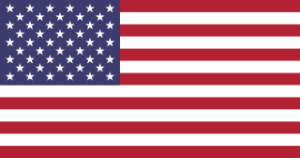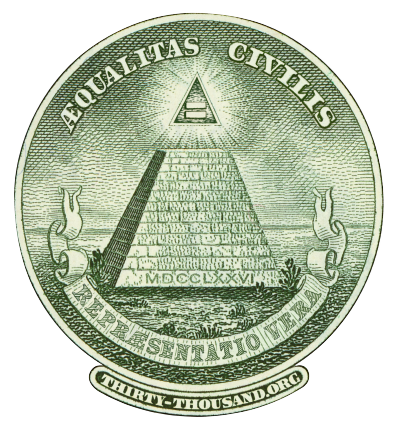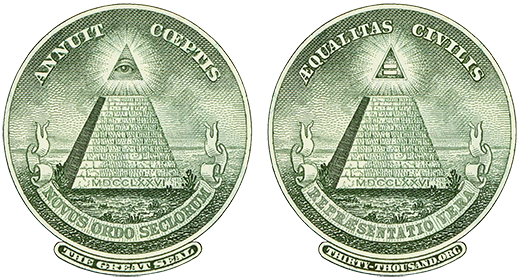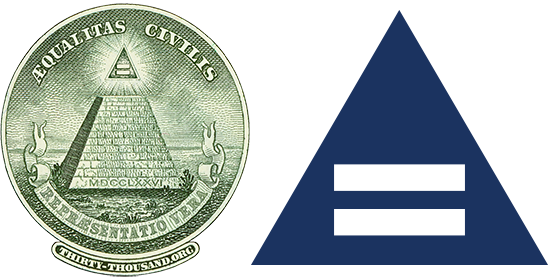Small districts eliminate the need for candidates to be funded by big money.
The candidates running for 435 House seats raised nearly two billion dollars for the 2020 elections.
The candidates running for 435 House seats raised nearly two billion dollars for the 2020 elections.
Their voracious need for so much funding is an unavoidable result of waging political campaigns in massive congressional districts. Small congressional districts would virtually eliminate this problem.
Take Control Away From the Powerful Special Interests
The average congressional district contains 760,000 people and growing. Whether you’re an incumbent or a challenger, political campaigns in such huge districts are fantastically expensive. In fact, a little over 1.9 billion dollars was raised for the 2020 House elections.1OpenSecrets.org: Elections Overview This means that, on average, $4,371,000 per congressional district was raised by all candidates (incumbents and challengers). In addition, nearly $3 billion of “outside money” was spent to support or oppose various candidates in the House races and otherwise.2OpenSecrets.org: Outside Spending
There are two colluding forces that drive this flow of money into political campaigns. The first is the enormous expense of political campaigns in massive congressional districts. The second driving force is that, in a House with only 435 Representatives, the Special Interests need only to corrupt a relatively small number of them in order to achieve their objectives. As a result, a membership in this very exclusive club is not only costly to acquire, but it is also extremely valuable to the Representative and his or her powerful patrons.
As a result, it often appears that most of our Representatives are serving various Special Interests (both foreign and domestic) rather than representing their constituents.
The solution is simple: Small congressional districts will make political campaigns affordable to the average person, thereby eliminating the need for candidates to prostrate themselves before powerful moneyed interests in search of funding. In addition, by virtue of these Representatives being merely one among thousands – rather than one of 435 – no Representative will be valuable enough to warrant appreciable Special Interest generosity. This is how we will replace the corporatocracy with a government that is of, by, and for the people!
“Numerous bodies…are less subject to venality and corruption.” – James Madison
“In so small a number of representatives, there is great danger from corruption and combination. A great politician has said that every man has his price. I hope this is not true in all its extent; but I ask… what government there is in which it has not been practiced?” – Melancton Smith
“We have the best government that money can buy.” – Mark Twain
“For too long, a small group in our nation’s capital has reaped the rewards of government while the people have borne the cost. Washington flourished, but the people did not share in its wealth. Politicians prospered, but the jobs left, and the factories closed.” – Donald Trump
The Cost of a House Membership
Because only 435 Representatives “represent” 331 million people nationwide,3Per the 2020 population census on average, each congressional district contains 760,000 people!4As a result of the 2020 population census, the national average district size will be equal to the total population of the 50 states (331,108,434) divided by 435 Again, that is an average: The population sizes of congressional districts range from 542 thousand to nearly a million. (This disparity in district sizes is an egregious violation of one person, one vote.)
The reason that an average of $4.3 million per congressional district was raised by the candidates for the 2019-2020 election cycle is that in these massive districts, political campaigns must be run much like a small business. A staff is needed to develop, organize, and execute a winning campaign plan, to raise money, and to organize volunteers. Marketing a politician, especially a little-known challenger, to so many people in massive congressional districts, requires a very expensive combination of television, web advertising, radio, and direct mail. And the bigger the district, the more costly the campaign, and the sky is the limit. For example, in the 2020 election, over $20 million was raised by all the candidates for a single congressional race!5Texas 22nd Congressional District.
Note that these sums do not include “outside money” or “dark money”. In the 2019-20 election cycle, outside spending totaled an estimated $3 billion for all election activities nationwide6OpenSecrets.org: Outside Spending (congressional races and others). When these independent expenditures are factored in, it is estimated that the total amount spent in at least ten House races (by all candidates) exceeded $20 million each, with the most expensive House race totaling over 30 million!7Bloomberg Government: Top 10 Most Expensive 2020 House Races The point is, because the House memberships are so valuable, it is very expensive to acquire one. The reason they are so valuable is that our House of Representatives is grossly undersized.
Incumbent House members who sought reelection in 2020 raised, on average, over $2.7 million each, compared to non-incumbent challengers who raised only 15% of that amount.8For the 2019-20 election, 407 incumbents raised a total of $1,109,127,848 = $2,725,129 each. 1,141 challengers raised a total of $476,705,801 = $417,796 each, or 15.3% of the average amount raised by the incumbents. Data from OpenSecrets.org And in order to defeat a House incumbent in the 2020 election, it cost over $3.8 million (on average).9Data from OpenSecrets.org (Read more about the incumbency advantage.)
It is unlikely that even the most honorable man or woman could raise so much money from the Special Interests without feeling unduly beholden to them, especially since they plan to go back to that well for more money before the next election. And making matters worse, many of these elected officials may not be particularly honorable to begin with. Regardless of how honorable they are, candidates must raise a huge amount of money in order to market themselves in massive congressional districts. Therefore, as a rule, only incumbent politicians, or the very wealthy, have access to the kind of money necessary to be elected, or reelected, to Congress.
Just as insidious as the toxic effect of campaign financing itself is the fact that Representatives are expected to devote, on average, six to seven hours per day on fundraising and press work (according to a PowerPoint presentation that was made to incoming House freshmen.10HuffPost: “Call Time for Congress Shows How Fundraising Dominates Bleak Work Life”.). This leaves only about three to four hours a day to do “the actual work of being a member of Congress”.
It’s obviously impossible for an ordinary citizen to raise the money necessary to mount a credible campaign in a congressional district. The incumbents’ fundraising advantage is particularly pronounced when it comes to political action committees (PACs), which either directly and transparently “invest” in sitting politicians. Worse yet, corporations and other Special Interests experience shakedowns by politicians to promote or protect their interests. Such fundraising tactics can resemble extortion.11For more information about how congressmen use extortive tactics for fundraising, read Peter Schweizer’s book “Extortion, How Politicians Extract Your Money, Buy Votes, and Line Their Own Pockets” (Boston, Houghton Mifflin, 2013).
Small Districts Means Small Campaign Spending
If the average congressional district were reduced to 50,000 people,12In 1789, the first congress proposed that the average population size of congressional districts be no larger than 50,000 to complement the average minimum size of 30,000 specified in the Constitution (as explained in Section 1). Consequently, Thirty-Thousand.org uses 50,000 to illustrate the concept of true citizen representation. which typically is around 20,000 households, there would likely be much less need for mass-market television and radio advertising. Instead, an incumbent (or challenger) could very effectively market him or herself by using lower cost methods such as campaigning door to door, holding local meet-and-greets, direct mail and other targeted media. Given that most of that effort requires only personal initiative on the part of the candidate and volunteers, it stands to reason that the total expense for such a campaign would be no more than other local elections in comparably sized districts.
In addition, because a candidate living in a small district may already be known to many in their community, and can more easily become personally acquainted with many of their constituents, the need for campaign advertising may be lessened. They will be able to rely more on personal networks and existing reputations and less on marketing campaigns, as they may have served on local boards of various kinds, led charitable efforts, or organized citizens on behalf of various causes.
Let’s consider this question from a different perspective. As noted above, an average of $4.3 million is raised in each congressional district by all the candidates (by all the candidates). And the average congressional district has approximately 750,000 people. Given that a district of 50,000 would be one-fifteenth that size, we certainly would not expect it to require a total of $290,000 (1/15th of $4.3 million) for several candidates to compete for that seat. Even if three competing candidates managed to somehow spend $30,000 each, that would only total $90,000.
An analysis of spending in state legislative districts might appear to contradict the preceding supposition. Though the average size of the states’ lower house districts is approximately 60,000,13Ballotpedia.org: Population represented by state legislators. a considerable amount of money can be raised in some of these districts. However, in addition to the electoral district population size, there is an equally important factor relative to an incumbent’s ability to raise funds: The size of the legislature. The larger the legislature, the less significant each Representative is. The average state legislature lower house contains only 108 members, which ranges from 40 in Alaska up to 400 in New Hampshire. Because most of these lower houses are materially undersized relative to their states’ populations, the importance each of their members is relatively quite significant.
In contrast, if the federal congressional districts were downsized to 50,000 people (or less), no single Representative could ever be worth very much money to the Special Interests. Why? Because instead of being one of an oligarchy of 435, these Representatives would be merely one of several thousand legislators! In a House of 435, a Special Interest may need only influence (or corrupt) a few Representatives to achieve a certain legislative outcome. However, in a House with over 6,000 Representatives, a Special interest would have to influence hundreds to achieve the same result.
Therefore, even if we disregard the supposition that these citizen legislators will generally be of much better character than the corruptocrats that currently occupy Congress, it would be cost prohibitive to corrupt hundreds of legislators in order to achieve the same effect as corrupting dozens of Representatives today. Moreover, as the number of Representatives is increased, any unethical collusion among them would require so many participants that it will become nearly impossible to keep secret.
The point is, with smaller districts virtually any citizen could afford to challenge an incumbent. This is because it is no longer about which candidate has the most money, but whether each candidate has enough money to mount a credible campaign. Beyond that, in a large-House-small-district republic, there is a rapidly diminishing marginal return on campaign expenditures beyond a certain point. This effectively levels the playing field by allowing an energetic and credible candidate to defeat an incumbent who can raise a lot of money.
Neutralizing the Lobbyists
A relatively small legislature is very cost effective for the lobbyists and Special Interests. In fact, an in-depth quantitative analysis concluded that “smaller legislatures favor the activities of interest groups in capturing and sustaining rents [increased economic benefits] by means of the political process”.14McCormick and Tollison, Politicians, Legislation and the Economy, 1981, page 57.
In 2020, there were over 11,500 registered lobbyists15Data from OpenSecrets.org Lobbying Data. who lobbied Congress and various federal agencies. The question this begs is: If it takes that many lobbyists to influence 435 Representatives (and 100 Senators) conveniently concentrated in one geographical area, how many would be needed to lobby over 6,000 Representatives who are spread all over the country? The question answers itself: Lobbying as we know it would be finished. It is easy to see why having thousands of Representatives distributed across the country (where their constituents could keep an eye on them) would be a huge setback to these Special Interests and their lobbyists.
Consequently, as the number of Representatives is enlarged, the amount of lobbying exerted upon each Congressman would be diminished considerably. While that that does not mean the end of all lobbying, it would certainly reduce the lobbyists’ reliance on extravagant allurements such as travel junkets and honoraria. In addition, if most of the Representatives were living (and working) in their home districts, D.C. would no longer be a one-stop shop for the Special Interests. And the Special Interests could not possibly field an army of lobbyists large enough to roam the country to schmooze or corrupt thousands of Representatives.
Therefore, with a much larger & distributed House, the lobbying effort would likely shift from the congressmen to the general public, with the Special Interests working to persuade the voters (who then have better control over their Representative) instead of circumventing the citizenry by using financial incentives to directly influence the Representatives. This is obviously preferable to the current form of lobbying.
Having all the Representatives concentrated in a single city is not only very convenient for the Special Interest groups, it is also convenient for the army of activist thugs and vandals who are evidently allowed to operate freely in Washington D.C. Our Representatives, their family members and their staff should have the liberty of strolling through the city and enjoying civilized life without risking being assaulted (verbally or otherwise) by belligerent activists seeking to intimidate (a very pernicious form of lobbying). While some of that could still occur when most of the Representatives are living and working in their home districts, the fact that they are not all concentrated in one area will, like the lobbying, discourage it greatly, especially since most of these local communities are committed to using law enforcement to protect their residents from harassment or worse.
Related to the subject of geographic concentration of our federal representation, it could be said that the ultimate form of lobbying is intimidation through warfare. On September 11, 2001, America learned how vulnerable its government is, as the Capitol Building (with both houses in session at that time) was likely the intended target of the hijacked flight 93.16NPS.gov: The Flight 93 Story. In an age of hypersonic cruise missiles, we need a distributed legislature that can operate without interruption in the event of a military attack. No enemy should believe it is possible to decapitate our federal government.
Generating Wealth from Political Power
Another form of financial corruption is the Representatives’ ability to amass a considerable amount of wealth while in office. This is not about those who were already wealthy when they were first elected to office. Instead, this is about those whose accumulation of wealth appears to be associated with their role in Congress, which is surprisingly common.17BusinessInsider.com: 54 members of Congress have violated a law designed to stop insider trading and prevent conflicts-of-interest. An analysis reported in BallotPedia lists scores of congressmen enjoying suspiciously high increases in their net worth, especially in comparison to the general population.18BallotPedia.org: Personal Gain Index (U.S. Congress). In their analysis, the top 100 increases among congressmen averaged 114% per year! And among all congressmen, the average annual increase was 15.4%, compared to an average of 3.7% among the population in general.
Are we expected to believe that, upon being elected, the congressmen magically acquire an extraordinary mastery of investing? If that seems implausible, then we are forced to conclude that these extraordinary increases in wealth are a result of the inside knowledge and special connections available to members of the oligarchy of 435. How this is done is well explained in Peter Schweizer’s book, “Throw Them All Out”, in which he observes:
Politicians have made politics a business. They are increasingly entrepreneurs who use their power, access, and privileged information to generate wealth. And at the same time well-connected financiers and corporate leaders have made a business of politics. They meet together in the nation’s capital to form a political caste.19Peter Schweizer, Throw Them All Out (Boston; Houghton Mifflin, 2011)
As stated in that quote, it is the congressmen’s power which positions them to profit so greatly from their position. It is the concentration of so much national power in the hands of so few Representatives that creates this corruptly lucrative situation. And while a lobbyist might be able to channel tens of thousands of dollars to an incumbent’s campaign, that Representative can make far more money by trading on inside knowledge relative to how pending legislation could affect a particular company or industry.
The problem is not just that there are too few Representatives relative to a nation of over 330 million. It’s that there are so few that any one of them could be serving on six to ten committees [link to Section 9], which makes them all the more powerful. Imagine how much less power they would have if each of them were merely one of 8,000 Representatives, and if no Representative could serve on more than one or two committees.
Of course, in a much larger House some Representatives will still be positioned to profit from their insider knowledge, but when our country club House is replaced by a plebiscite of citizen legislators, the resulting diffusion of power will greatly limit the opportunity for such political profiteering.
The Importance of Single Member Districts
Currently, all 435 Representatives are elected from single-member districts. A proposal known as “proportional representation” advocates for enlarging the House by having multiple Representatives elected from huge districts. In other words, each congressional district would have numerous candidates and multiple winners as determined by a variety of complicated voting methods.20Wikipedia.org: PR electoral systems. So rather than having several candidates competing for one seat, there would be a multitude of candidates competing for the district’s several seats.
The obvious problem with this is that by preserving the huge congressional districts, this larger pool of candidates would have to raise that much more money to be competitive with one another. Having so many candidates competing in the same huge district for financial support would further strengthen the insidious role of the powerful Special Interests. This would make it virtually impossible for a poorly funded candidate, especially an independent, to win an election. In addition, most of the proportional representation voting systems require that voters vote for parties instead of individual candidates, which would institutionalize a party-centric governing structure. This would make it nearly impossible for new parties to emerge once a few political parties establish their political oligopoly.
As with increasing the number of small single-member congressional districts, multi-member districts would increase the number and diversity of Representatives. However, by maintaining huge congressional districts, all the candidates would still be begging for money from PACs, corporations, and other Special Interests. So, unlike having numerous single-member districts, proportional voting systems do not eliminate the fundamental problem of financial corruption, especially with respect to the incumbency advantage. This is why Thirty-Thousand.org advocates for representational enlargement solely by increasing the number of single-member districts.
Returning Political Power to the People
Money is a toxin that courses through American politics, grotesquely corrupting our republic’s most essential functions. And incumbent fundraising advantages make elections fundamentally unfair: The cash that drives the perpetual reelection of incumbents is supplied by the Special Interests that corrupt virtually every piece of legislation that passes – or that does not pass – through the US Congress. The overall impact is absolutely devastating to popular government. To fix the problem for the House of Representatives, the cleanest, simplest and most comprehensive solution is to break up our massive congressional districts into much smaller ones and base most of the Representatives in their home districts, among his or her own constituents.
Though it is safe to assume that lobbyists and Special Interest groups will be around forever, we can at least substantially eliminate their control of the House of Representatives by drastically reducing the congressmen’s need for political campaign funds. The most effective way to shift the allegiance of the House of Representatives from the powerful Special Interests to we the people is to significantly downsize the congressional districts by increasing the number of Representatives. This is not a new idea. In fact, the very first Congress proposed a constitutional amendment to establish a maximum congressional district size of 50,000 people. (For more information, read about “Article the first”.)
Along with replacing 435 mega districts with several thousand small single-member districts, we can have most of our Representatives living and working in their home districts.21If there were several thousand Representatives, presumably a few hundred of them could be working in DC on various committees and other legislative work. However, the rest of them can be expected to work from their home district, where they can read proposed legislation and vote virtually. Working locally in a district of 50,000 (or less) would make it much easier for the Representatives to meet with their constituents, provide constituent services, be petitioned by their constituents, and attend local community events such as school board meetings. This will also enable the citizens to keep an eye on their Representative who is, in fact, their employee. It is up to the people, not the Special Interests, to supervise these Representatives.
If downsizing the congressional districts will substantially eliminate Special Interest control of the federal House, is there also a way to accomplish the same thing in the Senate? There is, if we are willing to repeal the 17th Amendment.
Reducing financial corruption is only one of many reasons that representational enlargement will enable we the people to take back our government from the powerful Special Interests. Read about the additional benefits which are explained in the other sections of this website.
© Thirty-Thousand.org [Article Updated 02/01/22]
Related Articles:
Vox.com: I was a lobbyist for more than 6 years. I quit. My conscience couldn’t take it anymore.
POGO.org: American Voters Say Corruption is a Concern; Congress Should Heed the Message.
GovTrack.com: Legislator Misconduct Database.
| ◄ Section Two | Section Four ► |
Explore More Topics:
- 1OpenSecrets.org: Elections Overview
- 2OpenSecrets.org: Outside Spending
- 3Per the 2020 population census
- 4As a result of the 2020 population census, the national average district size will be equal to the total population of the 50 states (331,108,434) divided by 435
- 5Texas 22nd Congressional District.
- 6OpenSecrets.org: Outside Spending
- 7Bloomberg Government: Top 10 Most Expensive 2020 House Races
- 8For the 2019-20 election, 407 incumbents raised a total of $1,109,127,848 = $2,725,129 each. 1,141 challengers raised a total of $476,705,801 = $417,796 each, or 15.3% of the average amount raised by the incumbents. Data from OpenSecrets.org
- 9Data from OpenSecrets.org
- 10
- 11For more information about how congressmen use extortive tactics for fundraising, read Peter Schweizer’s book “Extortion, How Politicians Extract Your Money, Buy Votes, and Line Their Own Pockets” (Boston, Houghton Mifflin, 2013).
- 12In 1789, the first congress proposed that the average population size of congressional districts be no larger than 50,000 to complement the average minimum size of 30,000 specified in the Constitution (as explained in Section 1). Consequently, Thirty-Thousand.org uses 50,000 to illustrate the concept of true citizen representation.
- 13Ballotpedia.org: Population represented by state legislators.
- 14McCormick and Tollison, Politicians, Legislation and the Economy, 1981, page 57.
- 15Data from OpenSecrets.org Lobbying Data.
- 16NPS.gov: The Flight 93 Story.
- 17
- 18BallotPedia.org: Personal Gain Index (U.S. Congress).
- 19Peter Schweizer, Throw Them All Out (Boston; Houghton Mifflin, 2011)
- 20Wikipedia.org: PR electoral systems.
- 21If there were several thousand Representatives, presumably a few hundred of them could be working in DC on various committees and other legislative work. However, the rest of them can be expected to work from their home district, where they can read proposed legislation and vote virtually.





